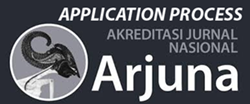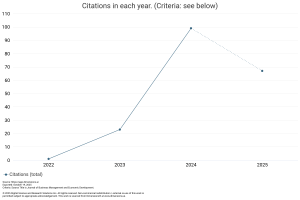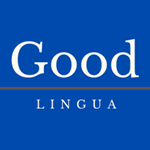Differentiation Analysis of Profitability & Efficiency: Case Study at Luhve.id as MSMEs in Fashion Industry
DOI:
https://doi.org/10.59653/jbmed.v2i03.966Keywords:
MSME, fashion industry, Luhve.id, Mann-Whitney U test, profitability, efficiency, descriptive analysisAbstract
This research aims to conduct a comparative analysis of the performance between MSME Luhve.id and the broader fashion industry MSME, focusing on profitability and efficiency aspects. The research method employed is quantitative descriptive analysis, with data collection through observation, interviews, and literature review. The sample utilized comprises profitability and efficiency data from Luhve.id's sales over a 36-month period from 2021 to 2023, as well as the average percentage of profitability and efficiency of the fashion industry MSME from previous studies. Data analysis techniques include normality tests and Mann-Whitney U tests. The findings reveal significant differences between MSME Luhve.id and the fashion industry in terms of profitability and efficiency. MSME Luhve.id demonstrates lower average profitability and efficiency performance compared to the fashion industry MSME. Factors influencing these differences include the relatively new age of MSME Luhve.id and the digital sales strategy that may require further development. Nonetheless, the digital strategy shows potential for long-term growth.
Downloads
References
Adedeji, I.B. (2019). Comparative analysis of technical efficiency of catfsh farms using different technologies in Lagos State, Nigeria: a Data Envelopment Analysis (DEA) approach. Journal of Agriculture & Food Security, 1-9.
Aghnitama, A. A., & Hersugondo. (2021). Pengaruh Ukuran Perusahaan terhadap Profitabilitas Perusahaan Pada Indeks Investor33 Di BEI. Jurnal Akuntansi Dan Manajemen (JAM). Volume 18 Number 02 (Oktober 2021).
Agus Darmawan, AY (2021). Comparative Analysis of Company Profitability in The Pandemic Time With 2 Years of Pre-Pandemic. 1st ICEMAC 2020: International Conference on Economics, Management, and Accounting, 426-441.
Ambarsari, R and SB Hermanto. 2017. The Effect of Company Size, Sales Growth, Profitability, Asset Structure, Liquidity on Capital Structure. Journal of Accounting Science and Research 6(3):1268-1289.
Ananta, Y. (2018). . The Export Value of the Indonesian Fashion Industry Reached IDR 123 Trillion as of July 2018. Retrieved September 24, 2020.
Halim., A. (2020). The Influence of the Growth of Micro, Small and Medium Enterprises on the Economic Growth of Mamuju Regency. . GROWTH: Scientific Journal of Development Economics Volume 1, No. 2.
Please, Sofyan Syafri. (2011). Critical Analysis of Financial Reports. First Edition Tenth Printing. Jakarta : PT Bumi Aksara.
Henny, LS (2019). Factors That Influence Profitability in Manufacturing Companies. Journal of Accounting Paradigms, 1(2), 390-398.
Indonesia., KP (2018). Expansion of the Domestic Fashion Industry Market Through Indonesia Fashion Week 2018. Retrieved September 24, 2020.
Novendra, R. (2014). Comparative Analysis of the Efficiency of Sharia and Conventional Banking in Indonesia. Journal of Economics and Development 22 (2): 183-93.
Rifqi Rizaldi, AN (2022). Comparative Analysis of Profitability, Firm Size, and Market Share Before and During the Covid-19 Pandemic in Indonesia. PROCEEDINGS ICONIES FACULTY OF ECONOMICS , 89-98.
Santoso, Y., & Priantinah, D. (2016). The Influence of Profitability, Company Size, Asset Structure, Liquidity and Growth Opportunity on Company Capital Structure. Profita Journal: Study of Accounting Science, 4(4).
Sugiyono. (2018). Combination Research Methods (Mixed Methods). Bandung: CV Alfabeta.
Sugiyono. (2019). Quantitative and Qualitative Research Methodologies and R&D. Bandung: ALFABETA.
Sujarweni, Wiratna. (2014). Research methodology. Yogyakarta: Pustaka Baru Press.
Downloads
Published
How to Cite
Issue
Section
License
Copyright (c) 2024 Annisa Rizkitya Nurdin, Aldi Akbar

This work is licensed under a Creative Commons Attribution-ShareAlike 4.0 International License.
Authors who publish with this journal agree to the following terms:
- Authors retain copyright and grant the journal right of first publication with the work simultaneously licensed under a Creative Commons Attribution-ShareAlike that allows others to share the work with an acknowledgement of the work's authorship and initial publication in this journal.
- Authors are able to enter into separate, additional contractual arrangements for the non-exclusive distribution of the journal's published version of the work (e.g., post it to an institutional repository or publish it in a book), with an acknowledgement of its initial publication in this journal.
- Authors are permitted and encouraged to post their work online (e.g., in institutional repositories or on their website) prior to and during the submission process, as it can lead to productive exchanges, as well as earlier and greater citation of published work (See The Effect of Open Access).





























